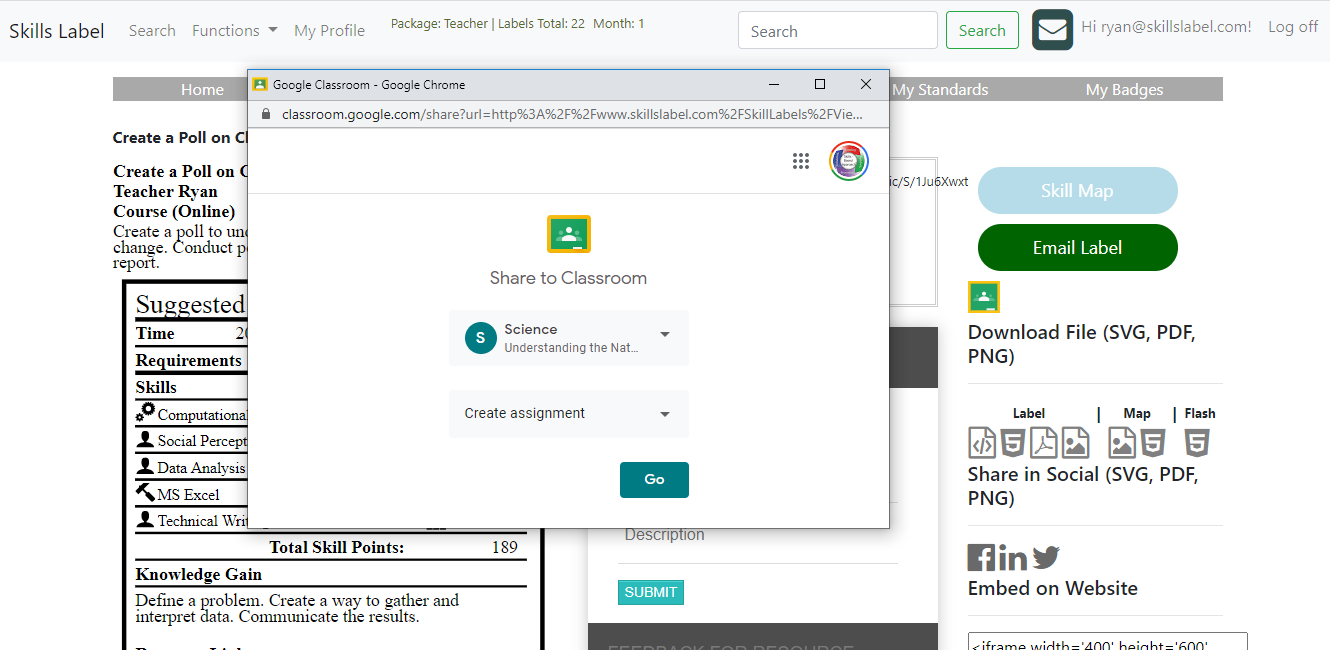A common theme argued in previous blogs is learning labels set a standard for defining learning and therefore should work across various types of learning applications. In most cases, getting applications to work together requires Application Programming Interface (APIs) and/or Learning Tools Interoperability (LTIs).
For some time, there is an interface to create an assignment for Google Classroom within the learning labels system. On the landing page for a label owned by an administrator, there is an icon to create an artifact in this popular learning management system. The process is ideal; the results get better.
A learning label is designed to define learning for a task or project, so fits well within the parameters of an assignment. The current use of the share button works well, though working with the API might allow integration with the learning labels dashboard – an ideal way to make comparisons, which allows learners to make choices. For example, create ten assignments in the learning labels system, import them into Google Classroom, and then let the learners choose three of them using the dashboard.
I am exploring how to use APIs to connect with the popular LMSs like Blackboard, Canvas, Moodle, D2L, etc. The process should be like the one established with this Google Classroom interaction, working with assignments representing tasks or projects.
After reviewing the Blackboard API documentation, the process should be: 1) authenticating a user; 2) retrieving owned courses; 3) creating ‘content’ or ‘group’ assignments for a selected course. Figure this same process should work with other LMSs, simply different authentication procedures.
Here it is also worth mentioning learning labels might work as a standalone ‘light LMS’ (as discussed in another section). There is functionality to put labels in a series, create a syllabus and projects, grading, a dashboard to manage a collection of labels, and support for personalized learning. Some of this functionality is also supported with the API.
The learning labels system is also an ideal why to work with education, higher education, and training standards. Currently, the system works with four sets of national / international standards. I am looking to also establish interoperability with the organization representing the standards. The basic interaction / process would be to find a standard, link them to skills, and post them on a learning label.
Finally, to get other applications to work with the learning labels system, there is currently an API with the following functionality (with a registered administrative account):
- Get all labels for a user.
- Get all the fields for a label.
- Create a label.
- Get all fields for a syllabus.
- Create a syllabus.
- Conduct grading for a task (represented as a label).
I think for an education publisher or game creator, accessing the learning labels API is an ideal way to show and list learning labels representing the artifacts they create within their website and mobile applications.
So, the two goals are to get the learning labels application to work with partner applications and vice versa. For the first goal, looking to get access to third-party platforms to use a collection of learning labels. For the second goal, looking to build awareness and open access to the learning labels system.
